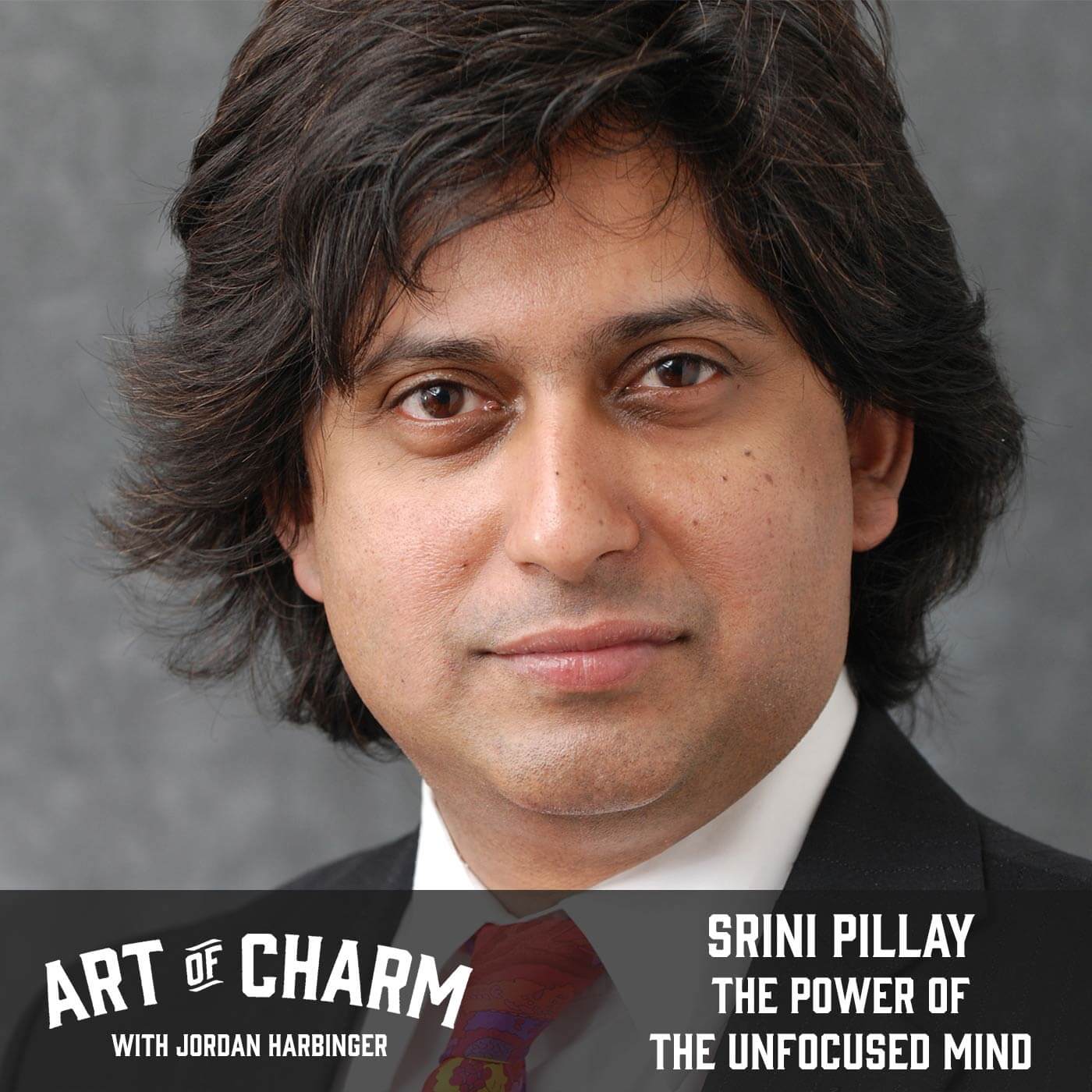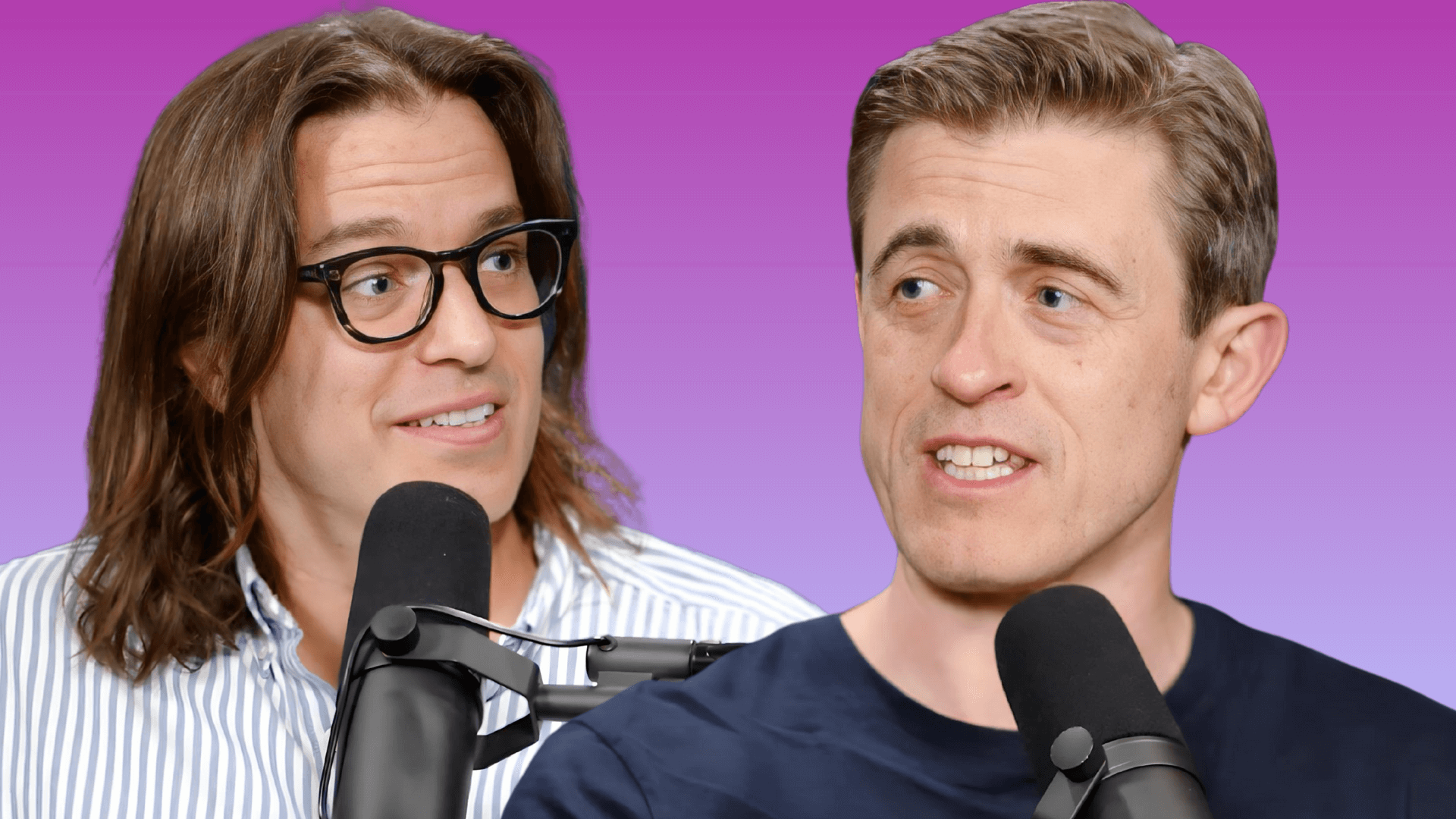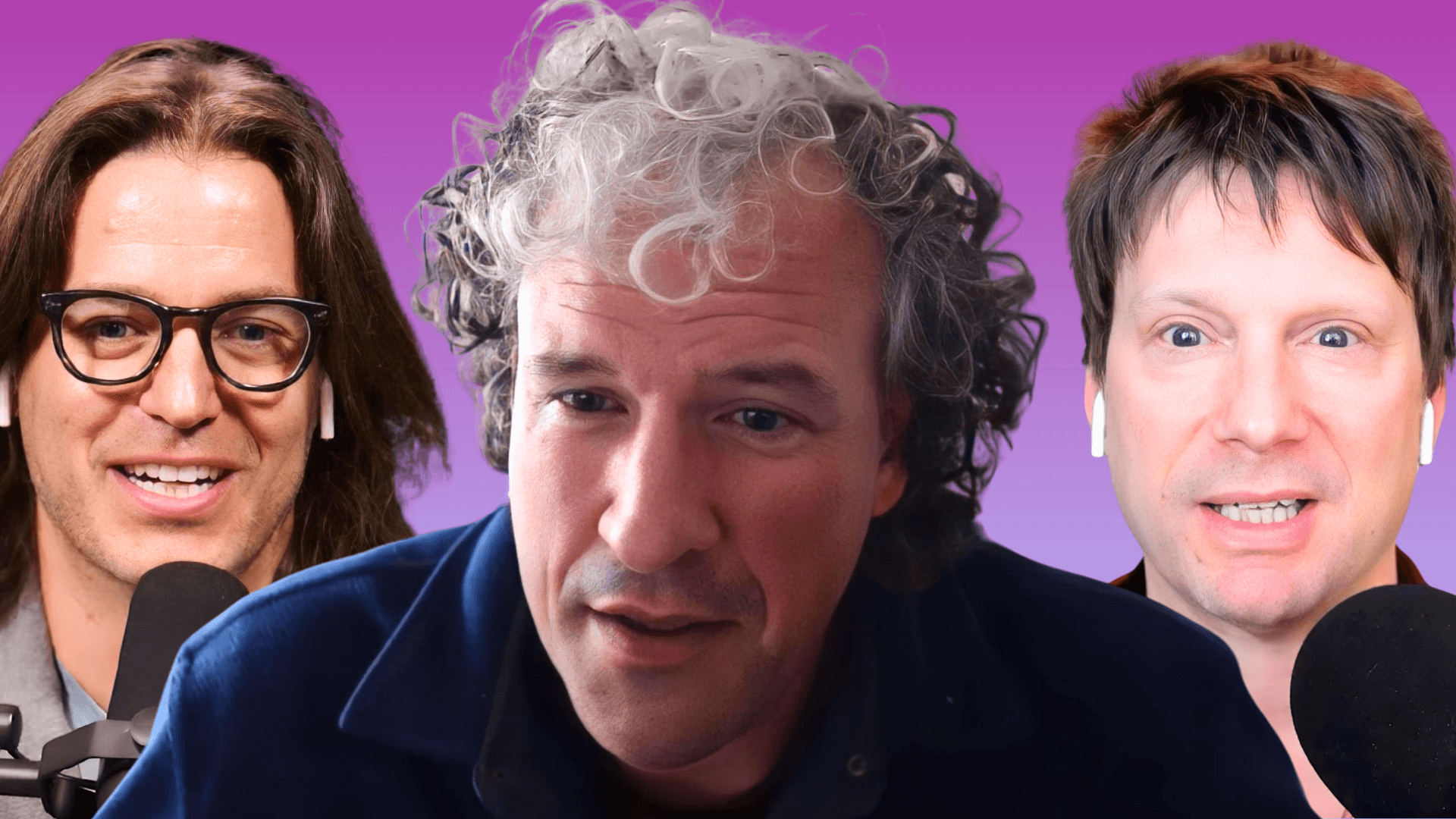Srini Pillay (@srinipillay) is a world renowned, Harvard-trained psychiatrist, former Director of the Outpatient Anxiety Disorders Program at McLean Hospital, and author of Tinker Dabble Doodle Try: Unlock the Power of the Unfocused Mind.
“Most of us spend about 46.9 percent of our days daydreaming anyway. So why not learn to unfocus in a more productive way?” -Srini Pillay
The Cheat Sheet:
- When 90-98 percent of mental activity is unconscious, focus can only get you so far.
- How focus and unfocus work in the brain.
- How positive constructive daydreaming helps us become more creative.
- Why doodling can improve memory by 29 percent.
- Discover the concept of possibility thinking for solving seemingly intractable problems.
- And so much more…
[aoc-subscribe]
There are a lot of superpowers locked away in the human brain that we’re only now beginning to understand. But if trying hard and focusing aren’t working to get the desired results, have you considered trying less to get the most out of your brain’s capabilities?
It sounds counterintuitive, but psychologist Srini Pillay, author of Tinker Dabble Doodle Try: Unlock the Power of the Unfocused Mind, joins us to explain how unfocusing can harness the brain’s subconscious — where the majority of brain activity really takes place. Listen, learn, and enjoy!
More About This Show
According to psychologist Srini Pillay, author of Tinker Dabble Doodle Try: Unlock the Power of the Unfocused Mind, we’re really only tapping into about two to ten percent of our overall brain activity when we consciously follow strategies, plans, and structures to find success in whatever we set out to do. But what if we could harness the rest — that 90 to 98 percent of mental energy dedicated to the unconscious?
“When you think about strategy or plan or any kind of three-step process, that’s really like a plant. But the plant needs to have its roots in a very rich, unconscious soil. And in order to do that, we need to learn how to till the soil of the unconscious so that the roots can really dig in deep, get a good hold, so that the plant can grow. So having a strategy is really important. Focusing is really important. But if you’re really looking to make a major change in your life, potentially in an exponential way, then learning how to till the soil of the unconscious is where I think the action is.”
Forks, Spoons, and Chopsticks
When following a strategy, a common shortcoming is to lose track of one’s sense of self — where the unconscious really dwells.
“Despite the fact that people have very significant plans — and a lot of them actually execute on those plans — they don’t even get close to where they want to get to,” says Srini. “And part of that, a lot of recent brain imaging research has shown that when people say, ‘I need to do X, Y, or Z to get somewhere,’ they do the thing, but the thing they forget about is the ‘I.’ The unfocused circuits in the brain are actually largely responsible for the sense of self and self-awareness.
“So if you want to follow a strategy, to focus on the you part, unfocus really needs to be part of what’s being activated.”
Srini likens the parts of our identity disclosed by focusing as being metaphorically accessible by fork — think of the tangible details you reveal in an online profile: name, age, gender, job title, etc. But this is just a small inkling of who we really are.
The parts of our identity disclosed on a less concrete level by unfocusing invite other utensils to the table that are better designed to capture aspects that are less tangible.
A metaphorical spoon scoops up sense memories like the smell of grandmother’s apple pie or the crispness of a winter morning.
Chopsticks metaphorically connect ideas across the brain. A marrow spoon metaphorically digs into the recesses of the brain for memories and fragments. And so on.
“Most human beings are filled with paradoxes,” says Srini. “People are maybe introverts and also incredibly powerful. People may feel like they’re happy, but they’re also lonely. And in our day-to-day activity, we tend to polarize how we are. But when you stimulate the unfocused circuits, then these two sides of yourself get represented at the same time, and that allows you to be much more powerful in executing your actions.”
Listen to this episode of The Art of Charm in its entirety to learn more about how to ensure we’re fully representing ourselves with the help of our unconscious, what might tip us off to a need to unfocus, how to begin the process of unfocusing when we identify this need, times of day when unfocusing is optimal, triggering positive constructive daydreaming (and how it differs from regular daydreaming), why doodling improves memory by 29 percent, how focus drains the thinking brain of energy through self regulation depletion, how we can use unfocus to predict possible outcomes, possibility thinking for overcoming our self-imposed obstacles to progress, and lots more.
THANKS, SRINI PILLAY!
If you enjoyed this session with Srini Pillay, let him know by clicking on the link below and sending him a quick shout out at Twitter:
Click here to thank Srini Pillay at Twitter!
Click here to let Jordan know about your number one takeaway from this episode!
Resources from This Episode:
- Transcript for Srini Pillay | The Power of the Unfocused Mind (Episode 643)
- Tinker Dabble Doodle Try: Unlock the Power of the Unfocused Mind by Srini Pillay
- Srini Pillay’s website
- Srini Pillay at Facebook
- Srini Pillay at Instagram
- Srini Pillay at Twitter
- Conversation on Daydreaming with Jerome L. Singer by Scott Barry Kaufman, Scientific American
- Can Doodling Improve Memory and Concentration?, Psyblog
- How to Create a Mind: The Secret of Human Thought Revealed by Ray Kurzweil
- Henri Poincaré: The Unlikely Link between Einstein and Picasso by Arthur I. Miller, The Guardian
- Minisode Monday #50 | Skill Stacking for Top Performance
- A Brief Guide to Embodied Cognition: Why You Are Not Your Brain by Samuel McNerney, Scientific American
- Positive Disintegration by Kazimierz Dabrowski
You’ll Also Like:
- The Art of Charm Challenge (click here or text AOC to 38470 in the US)
- The Art of Charm Bootcamps
- Elite Human Dynamics
- Best of The Art of Charm Podcast
- The Art of Charm Toolbox
- The Art of Charm Toolbox for Women
- Find out more about the team who makes The Art of Charm podcast here!
On your phone? Click here to write us a well-deserved iTunes review and help us outrank the riffraff!




